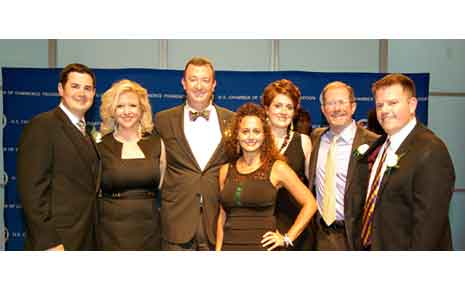How do Asking Rights, endowment, and transfer of wealth impact each other? As part of the Central Florida Foundation's 20th anniversary celebration, Mark Brewer, President/CEO of the Central Florida Foundation (CFF), and Tom Ralser, Principal of Convergent Nonprofit {and author of Asking Rights: Why Some Nonprofits Get Funded (and some don't)} provided a lot of valuable insights and useful information on these topics.
Let's take that conversation a step further though. How do Asking Rights, endowment, and transfer of wealth relate to fundraising campaigns? In order to better examine the concepts presented by Mark and Tom within the context of fundraising campaigns, I've broken the discussion into three parts: Demonstrating the Value of Outcomes, Raising Money for Endowment vs. Facilities or Programs; and The Time is Right to Launch a Capital Campaign.
Part II - Raising Money for Endowment vs. Facilities or Programs
During his presentation, Tom mentioned that endowment money is often the hardest money there is to raise. I'd like to put a finer point on that. For most mid-level and smaller investors, endowment sounds like a blank check or a slush fund, as Tom pointed out, or can otherwise be ill understood and unattractive. The thinking often goes: 'I want my money to go for a specific, well-defined, immediate purpose. I want you to do what you say you're going to do and show me the results.' These folks want to see the new building and say, 'I helped build that.' Or they want to invest in a specific program of work that leads to specific impacts over the next few years.
But for many of the truly savvy, deep-pocket philanthropists, endowment is not only a high priority, but often a requisite. As Mark Brewer pointed out in his presentation, a strong endowment connotes long-term organizational sustainability. People writing really big checks for grand, long-term purposes naturally want to have a strong degree of confidence that the organization in receipt is going to be around a long time and be able to deliver. Endowment helps nonprofits become long-term sustainable. And having a strong endowment attracts investment that's looking for long-term sustainability. It's a virtuous cycle.
Mark Brewer also mentioned 'growth entrepreneurs' as a ripe segment of the Central Florida prospect base when it comes to wealth transfer. I'd point out one caveat that we've found from our experience raising money for endowment. It's not uncommon for these types of folks to say something like this: ‘If I keep my money I can grow it much more rapidly than you could collecting interest in an endowment. Come back to me when you have a specific project or program need down the road and I’ll likely have a lot more money to give. That will be more beneficial to both of us.' That's a tough mindset to overcome, but having the endowment managed by Central Florida Foundation (or a similarly well-established and respected community foundation) can go a long way toward establishing the necessary credibility with those investors and persuading them that their money can indeed be effectively managed for maximum benefit to all concerned.
I actually prefer working on campaigns that combine endowment with other purposes, like funding new or renovated facilities and/or new or expanded multi-year programs of work. That enables us to have a selling point to each of the different mindsets that prospective investors might have. They can even earmark their commitment to a specific component if they want. But the overall funding we can obtain, and the overall objectives our clients can achieve, is typically much greater when we combine several elements of funding need into a single comprehensive multi-year strategic initiative.
Now that we have discussed Demonstrating the Value of Outcomes and Raising Money for Endowment vs. Facilities or Programs, let's explore why The Time is Right to Launch a Capital Campaign.







